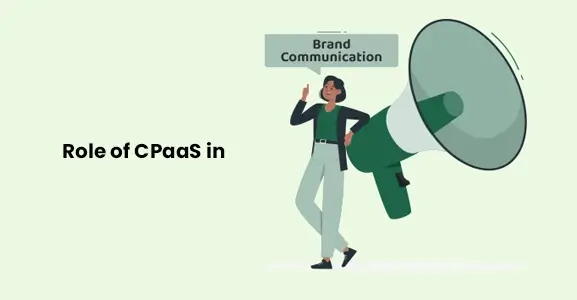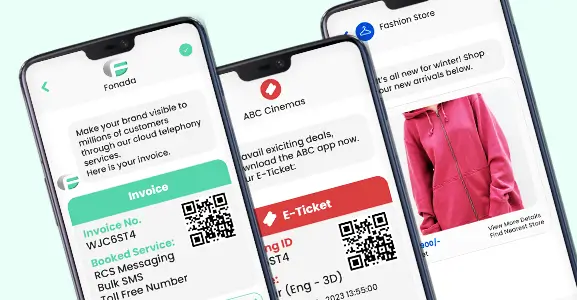With the rise of customer service concepts and serving customers through voice channels, phone calls have become a part and parcel of almost all business types. More than 3/4th of customers still favor voice channels over other communication channels. That is why both inbound and outbound calls are here to stay.
Let’s define what exactly inbound and outbound call meaning is and how these voice communication options are going to make a big difference to your business communication.
Both inbound and outbound call solutions can play a vital role in accelerating your market expansion and making business communication smooth.
Go through the content to know more about the inbound and outbound meaning and the difference between both communication patterns with reference to inbound and outbound call statistics.
While making a company’s marketing strategy, it is vital to focus on inbound and outbound marketing strategies. Inbound and outbound calls connect companies to their customers and customers to the company in two-way communication.
Some calls relate to seeking information and advice to resolve issues and problems faced by customers. Some calls are made to inform customers about updates regarding a product or service from the company side.
Investment in inbound and outbound marketing is compulsory. But businesses need to know how they can make the most out of the call business using a perfect mix of inbound and outbound calls. Both outgoing and incoming call options render a long list of benefits to the companies and customers as well.
Overall, inbound calls focus on serving potential customers by attending to customers’ calls and offering them relevant solutions regarding the use and operations of a specific product or service they are using at the moment. Outbound call marketing concerns reaching prospects and trying to convert them into real buyers.
Inbound And Outbound Meaning
What is the inbound and outbound process? This question directly relates to decoding the inbound and outbound meanings. Calling customers and responding to their queries are two regular features of every business communication. This content puts light on the real meaning of outbound and inbound calls along with some examples.
What Is An Inbound Call?
An inbound call meaning is an incoming call from the other side. Inbound calls are incoming phone calls that a call center receives from existing or potential customers. Customers initiate these calls to contact customer service agents to know more about a product or service or make a purchasing decision.
An inbound contact center responds to such a call. Primarily, there are two kinds of inbound calls: sales calls and customer service calls. Take a look at both inbound call types.
Sales Inbound Calls
Inbound calls are also known as sales calls or warm calls. These are normally calls initiated by potential customers with a query about products or services by a company.
Sitting on the other side, a call center agent responds to the queries instantly and prompts a sale. So, the sales strategy of every company encourages inbound calls from potential customers.
Customer Service Inbound Calls
Like sales-based inbound calls, customer service inbound calls also come from existing customers concerning a query or complaint about the products and services they have purchased.
Here, the prime role of a call center agent is to handle customers’ calls and resolve their issues in the least amount of time maintaining a high level of customer satisfaction and brand loyalty.
So, an inbound process meaning relates to the influx of phone calls from customers making to call center agents.
What Is An Outbound Call?
Generally, an outbound call center is seen as a business operation or function in which customer support agents or sales representatives make outgoing calls to third parties such as prospects, customers, prospects, or businesses.
An outbound call meaning is a phone call that is introduced by call center agents to their potential customers on behalf of a particular client or call center. Agents make outbound calls to prospective customers in order to focus on telemarketing, sales, lead generation, and fundraising.
Outbound calls are often classified as ‘cold calls. Sales teams or call center representatives can make outgoing calls to existing customers for debt collection, renewal services, contact list updates, market research, pre-emptive customer service, etc. Warm calls and cold calls are two primary types of outbound calls.
Also Read: How SMS OTP Verification Works And Its Importance
Examples Of Inbound And Outbound Calls
With the above-discussed points, the meaning of inbound and outbound calls is clear. Outbound calling means outgoing calls that sales representatives or agents take for sales, updates, follow-ups, and renewal reminders.
On the other hand, inbound calling means incoming calls that agents take for customer support or inquiries.
Inbound services include dispatch services, help desk services, order processing, and telephone answering.
Outgoing calls made by sales teams include the following interactions: Appointment setting, collections, customer notifications, market research, nonprofit or charity fundraising, post-sale follow-ups, survey outreach, telemarketing sales services, and telesales activities.
Difference Between Inbound And Outbound Calls
In a digital world where chatbots and emails dominate the communication between buyers and sellers, the utility of the calling business is still higher. A large number of people search ‘what is the difference between inbound and outbound calling’ when they are online.
The right understanding of inbound and outbound calls meaning helps people make the most out of the two calling patterns. If you want to differentiate between inbound and outbound calling, you need to know who initiates the call. It is clear that inbound calls are made by customers whereas outbound calls are made by a company.
Inbound and outbound calls are effectively opposite in nature. Inbound calls relate to receiving calls. Outbound calls relate to making calls for improving sales. Like their nature, the objectives of both call types also differ.
Outbound call centers build interest among potential buyers and inbound call centers address customers’ concerns. When we talk about inbound calls, a customer contacts a company first. Opposite it, a company representative contacts a customer first for making outbound calls.
| INCOMING CALLS | OUTBOUND CALLS | |
|---|---|---|
| Nature | Receives incoming calls from customers | Makes outgoing calls to shoppers |
| Call initiator | Companies and organizations | Customers |
| Types | Sales and customer services | Cold and warm |
| Benefit | Improve sales and productivity | Lead generation and customer retention |
| Service type | Customer services | Lead generating services |
| Technology | IVR, ACD, and call tracking | Automatic and predictive dialer |
| Focus | Answering questions and queries | Make more calls than receive |
| Process | Handling calls from customers | Reach out to customers |
Inbound And Outbound Call Statistics
According to statistics from Invoca, an AI-powered conversation intelligence platform, consumers like to communicate with businesses via the following communication modes:
- Phone (68%)
- Email (55%)
- In-person (40%)
- Live agent chat (33%)
- A chatbot (13%)
30% of consumers are the most comfortable when making high-stakes purchases on the phone. About 44% of consumers call businesses on the phone as part of their research process. 87% of respondents feel confident while interacting with a person on the phone and making high-consideration purchases.
Consumers are more likely to call sales teams while making purchases in the insurance, healthcare, telecom, automotive, home services, financial services, and travel sectors. That is why inbound and outbound calling is still a popular way of communicating between the customer and the company.
Outbound Call Statistics
- 41.2% of sales professionals see their phones as the most effective tool for their job. (Sales Insights Lab)
- 44% of salespeople surrender after one follow-up call. (Spotio)
- 57% of C-level prospects favor a phone connection. (Crunchbase)
- 70% of salespeople still like to connect with prospects over the phone and generate meetings. (RAIN Group)
- 80% of business deals are locked after the 5th follow-up. (Brevet)
- Over 30% of the leads are not followed by the sales team after being rejected initially. (CallHippo)
- Sales representatives can augment the conversion rate by up to 70%. (CallHippo)
- The average sales representative makes 52 calls per day. (The Bridge Group)
Inbound Marketing Statistics
According to marketing statistics from Hubspot, a marketer of software products for inbound sales, marketing, and customer service, on the state of inbound and outbound calling, marketers see better value from their inbound marketing strategies.
Inbound marketing generates 3x more leads per dollar than legacy methods.
Inbound Marketers Believe In Their Efforts:
- 68% of inbound marketers and 48% of outbound marketers categorize their marketing efforts as “effective”
- 52% of outbound marketers agree that their marketing efforts are “ineffective”
- 32% of inbound marketers report that their marketing strategies are “ineffective”
Inbound Gives Higher ROI:
- 46% of marketers say that inbound marketing initiatives render a higher ROI
- Only 12% of marketers report that their outbound marketing efforts result in a higher ROI
- 41% of respondents (inbound marketers) could not answer if inbound marketing gave them a competitive edge.
Inbound For Higher Quality Leads For Sales:
When it comes to analyzing which marketing tactic offers higher quality leads for the sales team, the following stats matter the most.
- 59% of marketers reported inbound
- 16% of markers responded outbound
- Some outbound marketers think self-sourced leads account for 26%
Benefits Of Inbound And Outbound Calls
Contrary to the prevalent belief of slow returns from outbound calls, outbound calling still works well. That is the primary reason why some industries continue to thrive on it.
On the other hand, inbound calling seems like the buzzword these days as it opens a perfect way to generate leads for the business.
Lead generation is the main target of almost all industries looking for more customers and sales. People generally ask about the benefits of employing inbound and outbound strategies.
Going through the differences between inbound and outbound calls will help you know which one is better. You can also know which call type suits your business the best via examination of call business benefits.
Benefits Of Inbound Calling Services
- Cost savings
- Customer satisfaction
- Customer-focused
- Free up resources
- Improve productivity
- Increases sales
- Managing higher call volumes
- Win back lost customers
Benefits Of Outbound Calling Services
Outbound calling results in many benefits ranging from quick lead generation to improved customer satisfaction. Some of the unique benefits are
- Increased customer satisfaction and retention rates
- Lead generation and qualification
- More cost-effective over traditional sales teams
Conclusion
People looking for the right answer to the inbound and outbound meanings are likely to find this content more useful for their search. Business enterprises of all sizes and types need both inbound and outbound call options to reach, entertain, and serve their existing and upcoming customers.
An inbound call center can be a great way to handle customer service and tech support calls. Outbound call center comes to your rescue when you need to generate leads.
Inbound and outbound calls always give a boost to your competent customer service team and call marketing efforts. It does not matter whether you reach your customers or your customers try to reach you, the prime thing is smooth and hassle-free communication between buyers and customers in real-time.
Inbound and outbound call statistics shown above declare the growing importance of call business and the benefits of inbound and outbound calls for both companies and their potential customers. There are many communication service-providing companies in India that can offer you quality inbound and outbound calling solutions.
For more information on how to get inbound and outbound calling solutions for your business, call 1800 137 3839 or email info@fonada.com.
FAQs
An inbound call is an incoming call that a call center executive receives from a customer who initiates to a call center for resolving a query regarding any product or service by the company.
An outbound call is an outgoing call that a call center executive makes to a customer in order to generate a lead and inform customers about a product or service by the company.
An inbound and outbound in simple words is an incoming call to a call center or an outgoing call to potential customers.
The difference between inbound and outbound calls can be made based on different factors like nature, call initiator, type, or technology of the call. It broadly relates to who makes the call and who receives the calls with different purposes in a real-time manner.
Cold and warm calls are the two prime types of outbound calls that sales representatives make to customers in order to enhance sales and convert leads into sales.

Dec 11, 2024
Top Contact Center Optimization Tools For 2024
“A thriving business knows how to fetch maximum output from limited resources by optimizing ca... Read More
Nov 13, 2024
What Is Brand Communication? CPaaS Role Explained
Did you ever wonder why some advertisements grab your attention instantly, while others do not? The... Read More
Nov 01, 2024
What Is Automated Messaging And How Does It Work?
Automated messaging or text automation empowers businesses and marketing professionals to connect wi... Read MoreLatest Updates
From Fonada
Industry Insights, Trends, Innovations, Updates, and Case Studies from Industry Experts
View
Customer
Reviews
Discover why our customers love us - read their authentic and heartfelt reviews!
View
Case
Studies
Explore real-life scenarios, offering analysis, and solutions to practical challenges
View
Convert Leads Into Sales With Fonada
Trusted CPaaS Solution Provider








